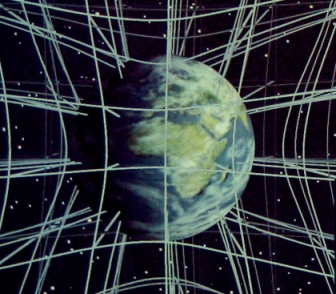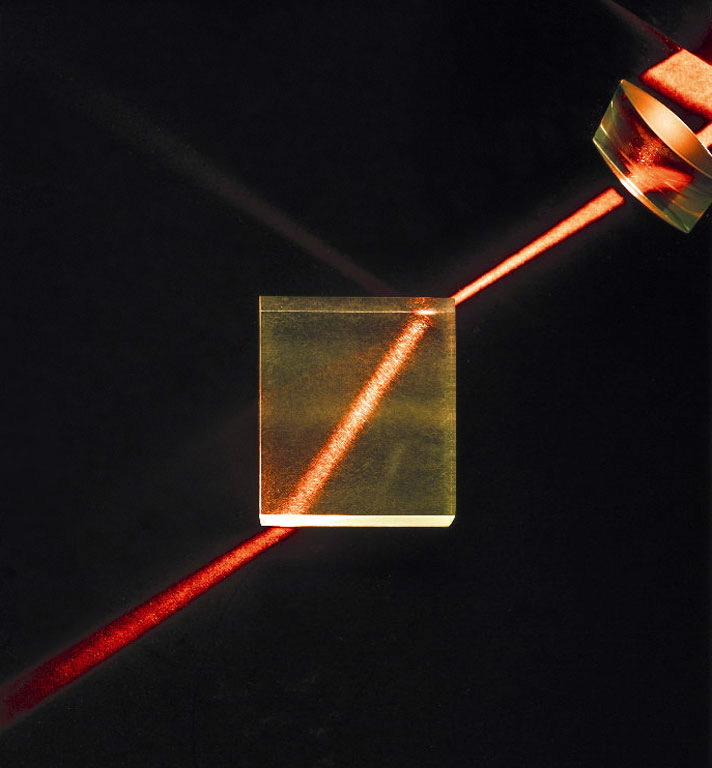Previous puzzle: Big Bang Puzzle Piece 2: Older than Legally Allowed
The Big Bang theory is facing some serious issues, including:
- highly red shifted quasars that appear next and even in front of nearby galaxies (so they are not really that far away, not as huge as suggested, and this also means that there is at least one other cause for the red shift)

- Tolman surface brightness: the brightness should decrease with distance, in the order of (z+1)-3. However, the data fits a non-expanding model almost perfectly, whereas for he big bang, new parameters have to be introduced (at least 2) in order to make the fit, plus the galaxies would have to evolve exactly in a way to make it look like it fits (what a coincidence…). (See for instance https://arxiv.org/ftp/astro-ph/papers/0509/0509611.pdf)
- Missing Lithium: the big ban predicts a small amount of Lithium right from the beginning, however measurements show that old stars have much less than predicted. https://www.asianscientist.com/2017/03/in-the-lab/big-bang-theory-hypothesis-cosmology/
- galaxies that formed too soon after the big bang and do not look primitive
- super clusters (Tully) that are over hundred million light years across and are older than the universe
- large scale voids that would take 70 billion years to form

- the fact that space is supposed to exist in an absolute sense in order to expand, yet in other areas of physics it is strictly assumed that space does not exist
- the “expansion” as sole reason for the red shift, which is not a Doppler effect, and how this red shift is really supposed to happen so that the light wave expands, but not matter.
- The suns center to limb variation in red shift – which is clearly has another cause than expansion (so if it is the case for the sun, this would also apply to other stars)
- very old stars that already contain carbon, which should not be there
- the fact that the distant universe does not look any denser than the universe today
- the energy conservation problem: how can the entire universe have arisen out of nothing?
- the black hole problem: given that all matter in the universe used to be much closer than now, and so much denser, it means the entire universe was well within its own Schwarzschild radius, meaning it was a black hole. If nothing can get out of a black hole, then how come the universe itself can?
- the whole idea of inflation, dark matter, dark energy – all ad hoc additions to the theory because observations do not fit
- the supposedly observed “time dilation” of supernovas, but lack of such time dilation in gamma ray bursts
(These are just some of the main issues – for more information, please check the links below.)
Non-expanding, Infinite Universe
One possible solution to those issues is a simple non-expanding, infinite universe. That is, one that always existed, will always exist, where space neither expands nor contracts.
In another puzzle on the interpretation of general relativity, we discussed the idea that there is a completely equivalent model, the “crystal universe” model, where the space curvature is described with space-density, and not space-time, and where gravity is a purely optical phenomenon. In that model, both matter and light are purely made of (real) waves, oscillations in that elastic solid medium “space”.

What kinds of observations and predictions could we make based on this simple model? If this medium even has the tiniest bit of imperfection, then we would expect several observations:
- Red shift:
 For nearby moving objects, the dominant effect is probably a simple Doppler effect, that causes light to be red or blue shifted, depending on the velocity relative to earth (even Big Bang proponents agree on that). For more distant objects, there are many possible mechanisms (see Marmet’s paper for an extensive list), such as plasma redshift.
For nearby moving objects, the dominant effect is probably a simple Doppler effect, that causes light to be red or blue shifted, depending on the velocity relative to earth (even Big Bang proponents agree on that). For more distant objects, there are many possible mechanisms (see Marmet’s paper for an extensive list), such as plasma redshift. - CMB: when light travels a long distance through any (real) medium, the intensity decreases (attenuation). At the same time, this energy is not lost, but causes the medium to warm up slightly. This would not only explain Olber’s Paradox (that the sky is not bright), but also explain one possible reason that the universe has a temperature (CMB)
- No need for dark energy, and “dark matter” might be contained in the medium itself, maybe as low level vibrations?
Following are several predictions that could confirm such a model:
- The speed of light might be frequency dependent: at least for regular media, such as for sound waves in a crystal, waves with very short wave length (comparable to the crystal grid size) would travel slower than waves of longer wave length. If we consider that the universe has a grid size of around the Planck length h, then this would only affect ultra short gamma rays. This would mean that gamma rays with short wave length from far away events would arrive a bit later than longer wave lengths.
- As we look deeper into space, we would expect completely formed galaxies no matter how far away they are, and stars that contain carbon (and other heavier elements)
- The universe does not get any denser the further away we look
- Any size of void or cluster is possible
- The entropy of the entire universe does not increase, but is constant.
- There must be a process by which particles form out of the background energy/oscillations of space (such as the “spontaneous” particle/anti particle formation in vacuum)
Links
Static Universe Models:
- Prof. David F. Crawford: Observational evidence favors a static universe: https://arxiv.org/pdf/1009.0953.pdf
- Static Universe: http://en.wikipedia.org/wiki/Static_universe
- Static Universe (Lerner): http://www.learner.org/courses/physics/unit/text.html?unit=11&secNum=2
- Static Universe (Ratcliffe): http://www.hiltonratcliffe.com/Static.htm
RedShift:
- http://www.santilli-foundation.org/docs/IRS-confirmations-212.pdf
- http://www.workshops-hadronic-mechanics.org/isoshifts.php
- http://www.benthamscience.com/open/toaaj/articles/V003/126TOAAJ.pdf
- http://www.redorbit.com/news/science/1113036944/santillis-invariant-derivation-of-hubbles-law-without-expansion-of-the/
- http://qedradiation.scienceblog.com/11/redshift-by-cosmic-dust-trumps-hubble-and-tired-light-theories/
- http://www.newtonphysics.on.ca/universe/
- German: http://www.newtonphysics.on.ca/hubble/rotverschiebung.pdf
- IsoRedShift (Santilli): (unclear if this is sound science or not)
https://emmind.net/temp/cosmos/Files/(556)%20IRS-confirmations-212.pdf
Optical analogues of General Relativity:
- Hagen Kleinerts World Crystal:
http://users.physik.fu-berlin.de/~kleinert/papers/planckklcZN.pdf - Defects and Diffusion in the Planck-Kleinert Crystal:
http://users.physik.fu-berlin.de/~kleinert/359/braz.pdf
Big Bang Problems:
- Missing Lithium: https://www.asianscientist.com/2017/03/in-the-lab/big-bang-theory-hypothesis-cosmology/
- http://metaresearch.org/cosmology/BB-top-30.asp
- Tolman: https://arxiv.org/ftp/astro-ph/papers/0509/0509611.pdf
- http://www.spaceandmotion.com/Cosmology-Big-Bang-Theory.htm
- http://csep10.phys.utk.edu/astr162/lect/cosmology/bbproblems.html
- http://science.howstuffworks.com/dictionary/astronomy-terms/big-bang-theory7.htm
- http://www.marmet.org/cosmology/fallofbigbang/index.html
- https://arxiv.org/pdf/1801.07582.pdf (Marmet 2018, redshift)
- http://www.dailygalaxy.com/my_weblog/2013/11/the-largest-discovered-structure-in-the-universe-contradicts-big-bang-theory-cosmology-weekend-featu.html
- http://www.rense.com/general63/bbang.htm
- http://voices.yahoo.com/old-galaxies-young-universe-contradict-big-8744047.html
- http://cosmologyscience.com/cosblog/observation-of-two-early-mature-galaxies-rare-objects-or-is-big-bang-model-inaccurate/
- http://cosmologyscience.com/cosblog/spiral-galaxy-bx442-supports-hubbles-belief-redshift-does-not-mean-expansion/
- http://rense.com/general53/bbng.htm
- http://www.spaceandmotion.com/cosmology/halton-arp-seeing-red-errors-big-bang.htm
- http://www.haltonarp.com/articles/is_physics_changing
- http://electric-cosmos.org/arp.htm
- http://www.libertysteve.com/commonsense/big-bang-baloney-real-science-is-suppressed/
- German: http://www.mahag.com/allg/urknall.php
http://www.mahag.com/allg/urknall2.php